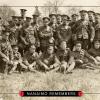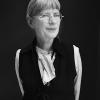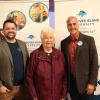October 22, 2010 - 4:49am
An article on the history of sexuality and Victorian sex trade workers has netted a national award for retired Vancouver Island University (VIU) History professor Dr. Patrick Dunae.
Now an honorary research associate at VIU, Dunae received the 2010 “best article” prize from the Canadian Historical Association (CHA) for his article entitled “Geographies of Sexual Commerce and the Production of Prostitutional Space: Victoria, British Columbia, 1860 to 1914.”
The article, which looks at prostitution in Victoria, was published in the Journal of the Canadian Historical Association.
The CHA selection committee was impressed by how Dunae contextualized his rich historical study of prostitution in Victoria, adding that the article “extends in a highly productive fashion the commitment to empirical research and theoretical sophistication that have become a hallmark of the historiography of sexuality in Canada.”
“I am flattered and delighted to receive the award,” said Dunae, who recently published another essay called “Sex, Charades and Census Records: Locating Female Sex Trade Workers in a Victorian City,” in Histoire sociale/Social History (vol. 42, November 2009).
In addition to gleaning information from census records, Dunae used historical geographical information systems [GIS] and documents held in police department archives in the Pacific Northwest for his research.
His most surprising discovery was to find so many brothels in Victoria in the census years 1891 and 1901. “Previously, I had thought that the provincial capital was a rather prudish and ‘Victorian’ kind of place, but in fact it was the sexual emporium of the Pacific Northwest,” said Dunae.
“I was also surprised to find the longevity of some of the brothels, which operated continuously in the same location for two decades or more.”
While conducting his research, Dunae discovered correspondence in the BC Archives between census officials relating to sex trade workers.
“In reply to a query from an enumerator on how to record ‘public women’ [a Victorian-era euphemism for prostitutes], the official recommended the term ‘dressmaker’,” said Dunae. “That chance discovery offered some very interesting avenues of research, avenues that were more interesting to me than administrative history.”
Using a database he helped create in the 1990s, Dunae said it was relatively easy to identify every dressmaker on the census.
“Of course, not every dressmaker was a sex trade worker,” he added. “ For example, the 1891 census might identify a middle-aged widow who lived alone with her children in a respectable part of Victoria as a ‘dressmaker’. That woman likely made a living with needle and thread.
“But the census also revealed groups of young women living together in less-respectable parts of the city who identified themselves as dressmakers. I suspected, correctly, that these census households were brothels.
“I was able to confirm brothels by cross-referencing the names of suspicious ‘dressmakers’ with names of women who appear in police charge books for offences relating to the sex trade. And as a bonus, I subsequently discovered identification photos or ‘mug shots’ of women who were involved in the sex trade. These images, printed on small card stock and circulated between police departments in Portland, Seattle, Vancouver and Victoria, often presented a very flattering portrait of the women. The photographs offered an unexpected visual dimension to my research.”
Dunae’s fascination with studying census records began more than 20 years ago after he prepared a research guide for the provincial archives.
“Microfilm copies of nominal census schedules, with information on individuals and residential institutions had then been made available for the first time by the National Archives of Canada,” he said. “The nominal schedules offered a remarkably detailed picture of 19th century households.”
Once Dunae learned how to interpret the nominal schedules “it was like standing on the porch of a Victorian-era building and peering into the front door window. The nominal schedules provided the names, ages, religions, occupations, etc. of everyone in a household, including family members and lodgers.”
With support from VIU (formerly Malaspina) research grants, Dunae began transcribing census records on microfilm into a machine-readable database, building on work begun by the Public History Group at the University of Victoria (UVIC).
Together with his colleagues at VIU, associates at UVIC and undergraduate History students, Dunae gradually created an extensive database comprising all nominal census records for Vancouver Island (including the cities of Nanaimo and Victoria) for 1881, 1891 and 1901. They also created the website to make census data and other historical information about Vancouver Island widely available on the Internet (www.vihistory.ca).
The site provides access to detailed census data including the names, ages, origins, religions, and occupations of every person on Vancouver Island from 1881, 1891 and 1901. All told, nearly 90,000 detailed census records are available on the database, making it the most complete census dataset in Canada.
Dunae and his students also created a three-dimensional digital model of 19th century Victoria using current photographs, a bird’s eye view photo of Victoria from 1890, census data and street directories from 1891. The virtual city allows anyone to visit a particular street in Victoria and learn about the area’s rich and colourful history in the late 1800s.
Now retired, Dunae remains affiliated with the VIU History department as an honorary research associate. He is engaged with a multi-year Social Sciences and Humanities Research Council of Canada (SSHRC) funded research project involving partners at the University of Western Ontario (Geography) and UVIC (History).
“We’re building a historical geographic information system [GIS] of 19th century Victoria,” Dunae said. “My portion of the SSHRC grant is administered by VIU and employs VIU student research assistants.”
Next semester (spring 2011) Dunae will teach a fourth year course on The Practice of Public History at VIU’s Nanaimo campus. “It will be nice to get back into the classroom,” he said.
Dunae said the study of history facilitates the development of innovative, liberal-minded citizens who are intellectually well-equipped to engage with the present and prepare for the future.
“But as I say to my students, the study of history is not really a study of the past per se; rather, it is the study of evidence of the past. I like searching for the evidence,” said Dunae. “I’m intrigued by traces of the past, such as census records and police charge books, and opportunities they provide for seeing and possibly understanding historical people, places and events.
“VIU history students are similarly intrigued by these kinds of primary records and have utilized them in very sophisticated ways. Another compelling reason to study history – at least this kind of local and regional history using primary historical records – is the opportunity to be creative, make an original contribution to scholarship and have fun.”
-30-
To see examples of Dunae’s work, check out the Nanaimo in the 1890s website:
http://www.viu.ca/history/devnanaimo/index.asp
Additional research projects by VIU history students are posted on the History Department web site: http://www.viu.ca/history/devnanaimo/index.asp.
Tags: In the Community






